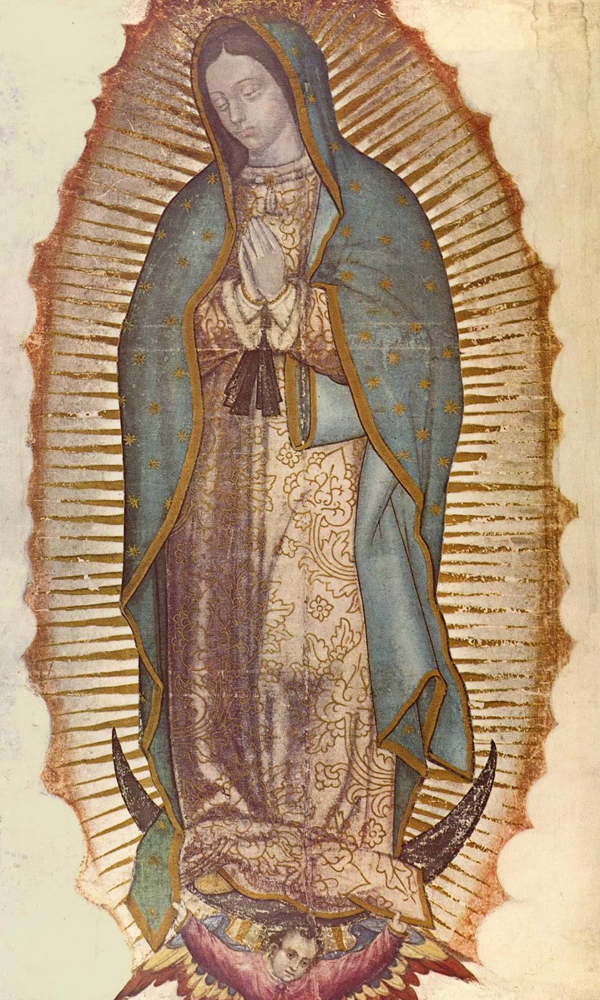Meditating on the sacred image of Our Lady of Guadalupe
Author: Br. José-Luis Peralta, OFM
Date Published: December 11, 2023
By Br. José-Luis Peralta, OFM
Recently, I gave a talk to a group of women in Albuquerque, New Mexico, on sacred images. For the talk, I took several images, including an image of the tilma of Our Lady of Guadalupe, and statues of Jesus, Mary and Joseph.
As I began, I asked, “What are sacred images used for?”
Each woman provided insights based on their experience and tradition. Ultimately, we agreed that sacred images are reflections and signs of the divine, the religious, the spiritual and the supernatural. Sacred images (statues, paintings, mosaics, sculptures, etc.) bridge the visible and the invisible, the human and the divine.
I told the women that sacred images have been part of our faith since the first century. Since then, sacred images have been made and used as aids to prayer and devotion. An ancient and authentic testimony is found in the catacombs, where today, one can admire figures of Christ and the Blessed Virgin Mary.
But what is the purpose of sacred images?
First, sacred images facilitate access, understanding and transmission of content to people of different languages, ages and cultures: They are easily readable, and therefore - without words or much explanation - they can reach the most significant number of people.
Second, if one sees, understands, interprets and approaches sacred images through the unique lens of the Christian faith, it is possible to grasp the catechetical message that the artists wanted to transmit with their works.
I told the group that Christian art and iconography can never fully express the unspeakable mystery of God: The reality signified (religious-spiritual) always surpasses human vision. Only God’s creations express his mystery and glory.
When I asked which of these images, paintings or icons expressed the mystery of God, they said that the tilma of Our Lady of Guadalupe best expresses the mystery of God.
They were right; it is not a human creation, and the only author is God. We contemplated the image of Our Lady of Guadalupe for some minutes. While contemplating this divine icon, I discovered how alive Mary is in the tilma. She seems to move constantly, and as I contemplated her image, I could hear the words of Mary to the servants at the wedding feast at Cana: “Do whatever he tells you."


